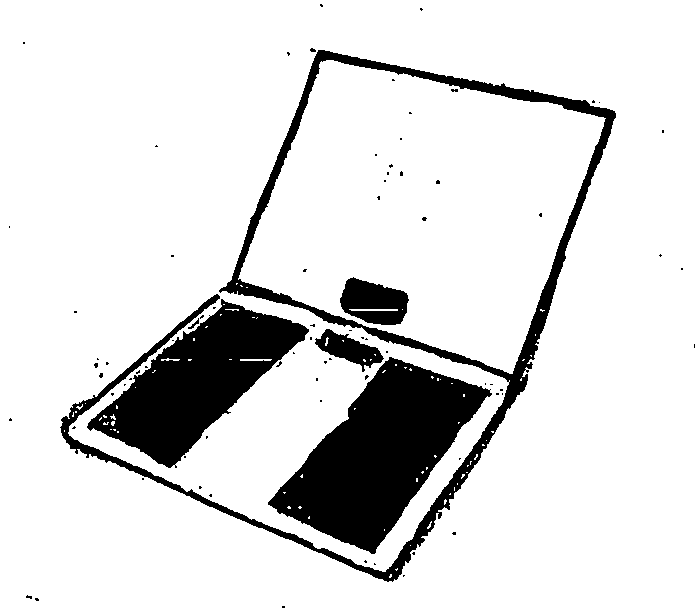System and method for monitoring plantar temperature of the foot
a plantar surface and temperature monitoring technology, applied in the field of self-examination of the plantar surface of the foot, can solve the problems of real damage to the victim, lack of patient awareness of the potential, and subsequent lack of attention and car
- Summary
- Abstract
- Description
- Claims
- Application Information
AI Technical Summary
Benefits of technology
Problems solved by technology
Method used
Image
Examples
Embodiment Construction
[0031]In the preferred embodiment of the invention, the pads (FIG. 1) were designed as 6″×14″ rectangles to be of a size that would accommodate most foot sizes with sufficient viewing area for the imprint. In the preferred embodiment of the invention, a matte, 7 mil Polycarbonate Film (1) was placed on the surface to protect the LCT layers, enable superior viewing and photography of the thermal image without glare and to make it easy to clean, but any similar protective layer would be sufficient. In the preferred embodiment of the invention, a ⅛″ Closed Cell Foam backing (2) was affixed to provide insulation for the LCT as well as a soft, non-slip surface, but any similar backing would be sufficient.
[0032]FIG. 2 shows the preferred embodiment of the invention, with A 7 mil polycarbonate film (3) with a Tycote ink layer (4), a chiral nematic liquid crystal layer (5), two cholesteric liquid crystal layers (6), (7), a leuco dye layer (8), a florescent yellow ink (9), Pressure sensitive...
PUM
 Login to View More
Login to View More Abstract
Description
Claims
Application Information
 Login to View More
Login to View More - Generate Ideas
- Intellectual Property
- Life Sciences
- Materials
- Tech Scout
- Unparalleled Data Quality
- Higher Quality Content
- 60% Fewer Hallucinations
Browse by: Latest US Patents, China's latest patents, Technical Efficacy Thesaurus, Application Domain, Technology Topic, Popular Technical Reports.
© 2025 PatSnap. All rights reserved.Legal|Privacy policy|Modern Slavery Act Transparency Statement|Sitemap|About US| Contact US: help@patsnap.com



